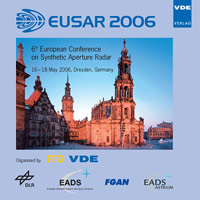Advanced T/R Module-Technology for SAR Applications
Konferenz: EUSAR 2006 - 6th European Conference on Synthetic Aperture Radar
16.05.2006 - 18.05.2006 in Dresden, Germany
Tagungsband: EUSAR 2006
Seiten: 4Sprache: EnglischTyp: PDF
Persönliche VDE-Mitglieder erhalten auf diesen Artikel 10% Rabatt
Autoren:
Rieger, Ralf; Feldle, Heinz-Peter (EADS Deutschland GmbH, 89070 Ulm, Germany)
Inhalt:
Highly integrated transmit/receive (T/R) modules are the key elements for active electronically scanned arrays of advanced SAR (synthetic aperture radar) sensors for space and airborne applications. The paper comprises relevant system and architecture aspects including some critical technologies and interfaces. An overview will be given to the evolution of T/R modules for spaceborne applications. New developments and perspectives are described, especially with regard to size, weight and cost reduction. Special focus is put on emerging technologies like GaN, MEMS, highly integrated module architectures and digital beamforming. Concerning a new tile T/R-Module-architecture, an actual EADS design approach is presented. Here, using HTCC as substrate and package material for the T/R module, a physical architecture is realised, that leads to a essential reduction of size and weight of the antenna. The T/R modules (cube form) are mounted on the accessible side of the manifold sandwich. This sandwich has a vertical structure of several layers (cooling structure, multilayer manifold carrying the power supply, control and RF signals). This architecture gives new possibilities, especially with regard to low volume antenna arrays as well as conformal antenna arrays. An integration of a patch antenna into the module design leads to an extremely flat and compact active antenna frontend. As the MMICs are the performance decisive components of each T/R module, new technologies in this area have to be observed with special attention. Driven by the demand for increased RF performance wide band-gap materials will become an important issue. For high frequency applications the Gallium Nitride (GaN) technology will overcome disadvantages of RF amplifiers based on GaAs technology (MESFET, pmHEMT), e.g. low power densities per mm gate length and high thermal resistance. In parallel SiGe technology will enable higher complexity on chip (e. g. complete receivers) at lower cost. Recent results on RF MEMS switch technology have shown very low insertion loss and high isolation with multi-octave performance. Additional investigations on sticking effects, switching time, number of maximum switching cycles are required before product applications


